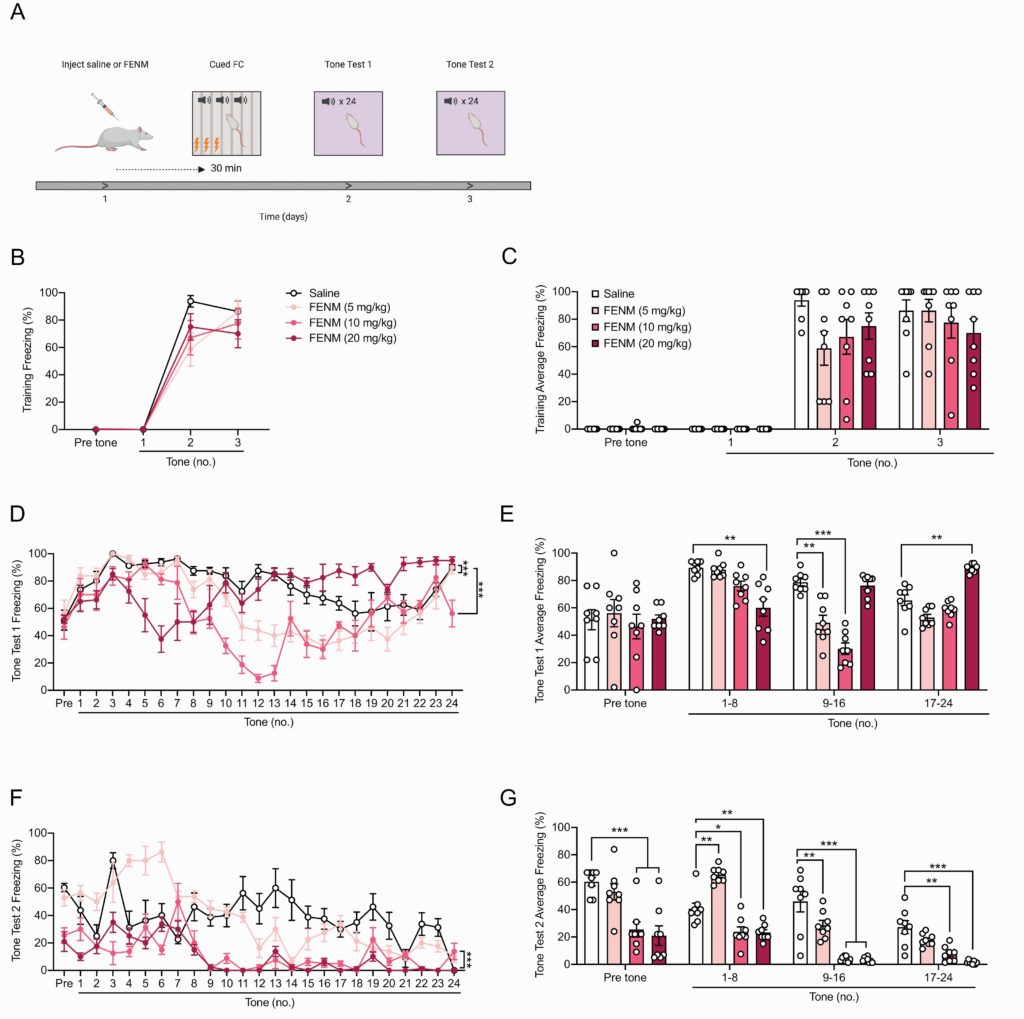
International Journal of Neuropsychopharmacology, 2021 Jul 14;24(6):519-531. https://doi.org/10.1093/ijnp/pyab007
Fluoroethylnormemantine, A Novel Derivative of Memantine, Facilitates Extinction Learning Without
Sensorimotor Deficits. Briana K. Chen, Gwenaëlle Le Pen, Adam Eckmier, Gilles Rubinstenn,
Therese M. Jay, Christine A. Denny.
Background
Memantine, a noncompetitive N-methyl-D-aspartate receptor antagonist, has been approved for use in
Alzheimer’s disease, but an increasing number of studies have investigated its utility for neuropsychiatric disorders. Here, we characterized a novel compound, fluoroethylnormemtantine (FENM), which was derived from memantine with an extra Fluor in an optimized position for in vivo biomarker labeling. We sought to determine if FENM produced similar behavioral effects as memantine and/or if FENM has beneficial effects against fear, avoidance, and behavioral despair.
Methods:
We administered saline, FENM, or memantine prior to a number of behavioral assays, including paired-pulse
inhibition, open field, light dark test, forced swim test, and cued fear conditioning in male Wistar rats.
Results:
Unlike memantine, FENM did not produce nonspecific side effects and did not alter sensorimotor gating or
locomotion. FENM decreased immobility in the forced swim test. Moreover, FENM robustly facilitated fear extinction learning when administered prior to either cued fear conditioning training or tone reexposure.
Conclusions:
These results suggest that FENM is a promising, novel compound that robustly reduces fear behavior and may
be useful for further preclinical testing.
Read the full paper
Preview of the work:

Fluoroethylnormemantine (FENM) attenuates learned fear when administered directly before cued FC. (a) Rats were administered a single injection of saline or FENM (5, 10, or 20 mg/kg) 30 minutes prior to 3-shock cued FC. The next 2 days, rats were placed into a novel context and reexposed to the conditioned stimulus. During both tests 1 and 2, freezing was assayed in rats as a measure of learned fear behavior. (b–c) In the training session, freezing was comparable across all groups. (d–e) During test 1, FENM (5, 10, and 20 mg/kg) reduced freezing to the conditioned tones at various time points compared with the saline control group. FENM (20 mg/kg) increased freezing compared with saline during the last epoch of the test. (f–g) During test 2, at every time point, FENM (10 and 20 mg/kg) attenuated learned fear compared with the saline control group. FENM (5 mg/kg) increased freezing during tones 1–8, but reduced fear behavior during tones 9–16 (n = 8 male rats/group). Error bars represent ± SEM. *P < .05, **P < .01, ***P < .0001. Abbreviations: FC, fear conditioning; Sal, saline.
